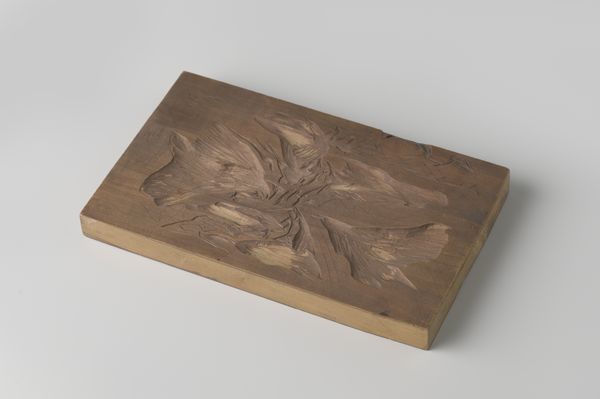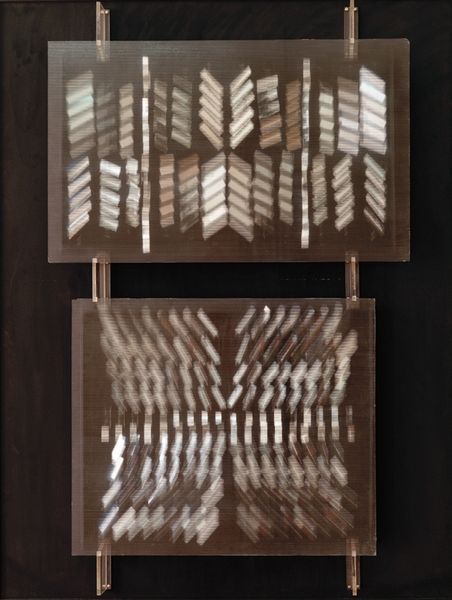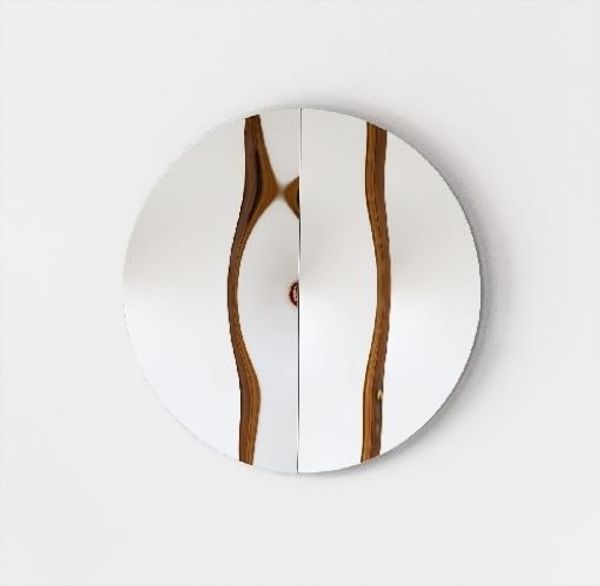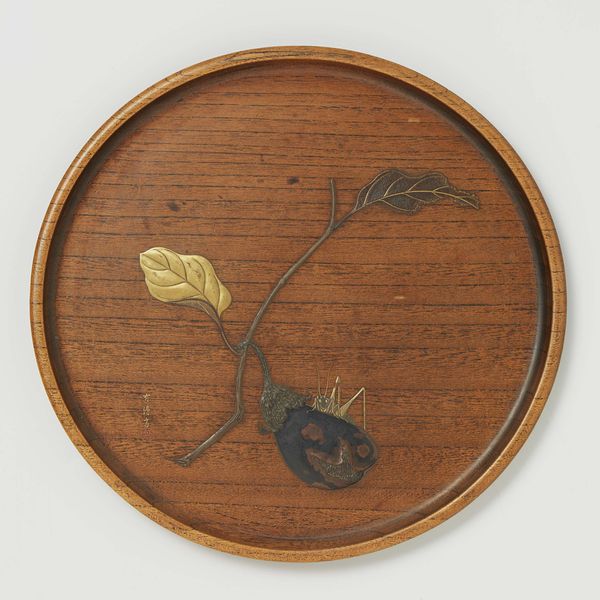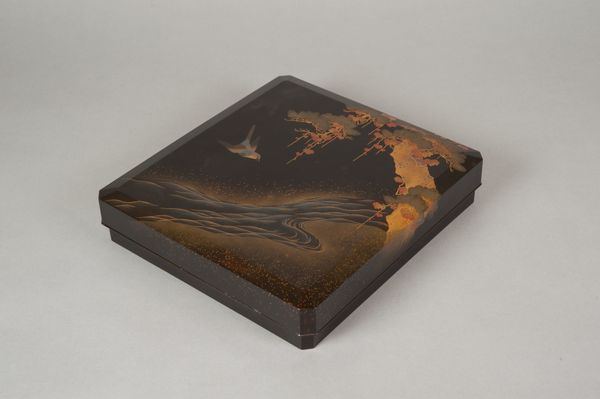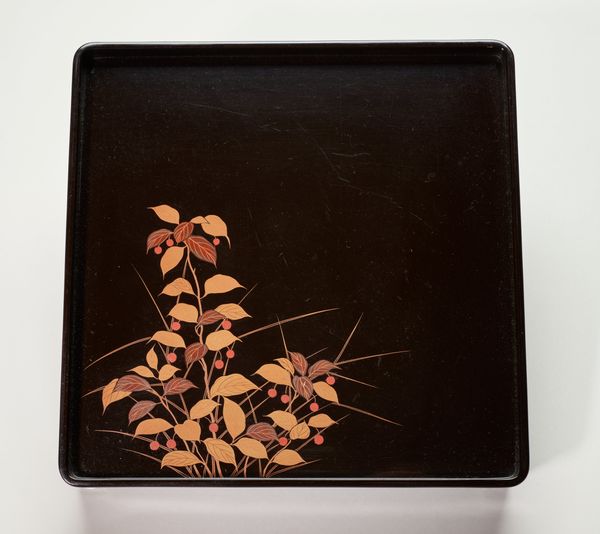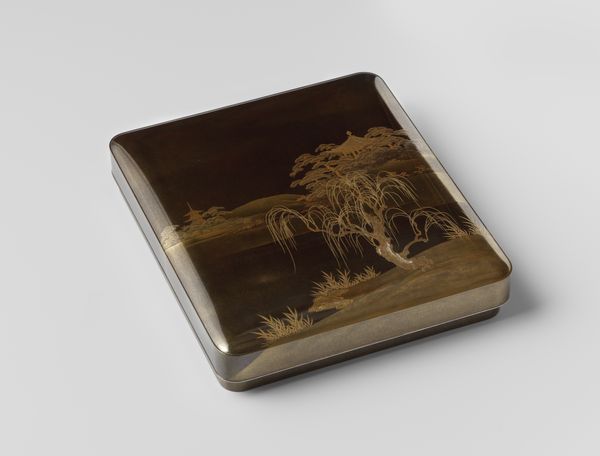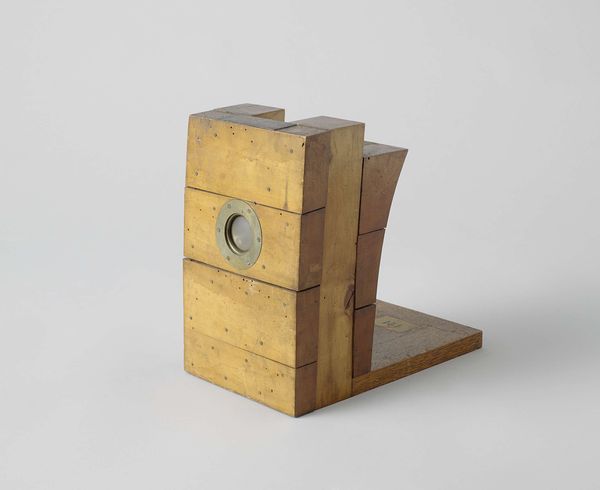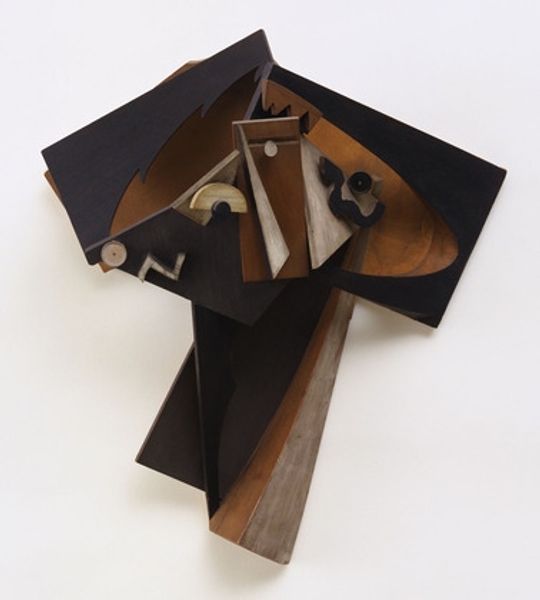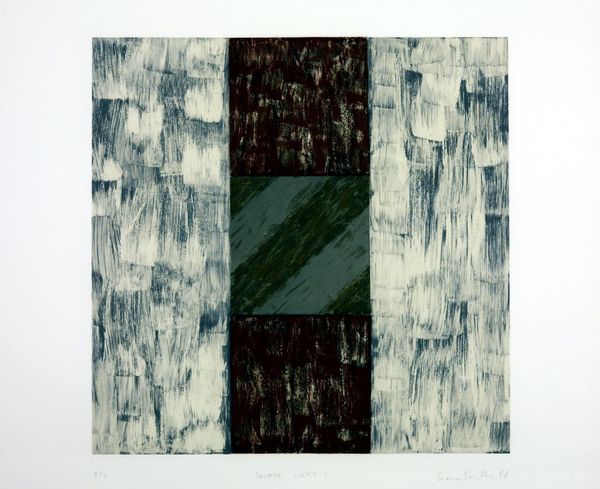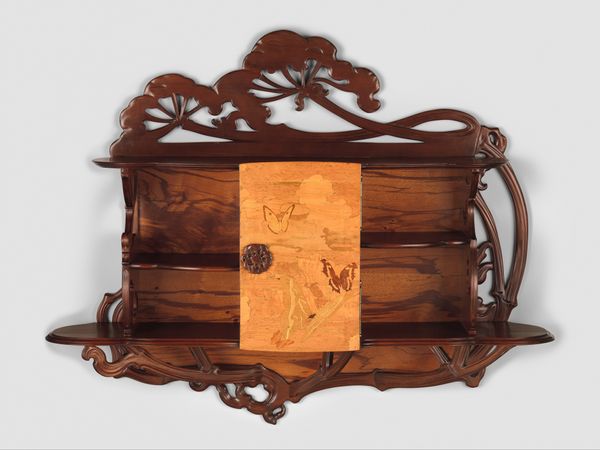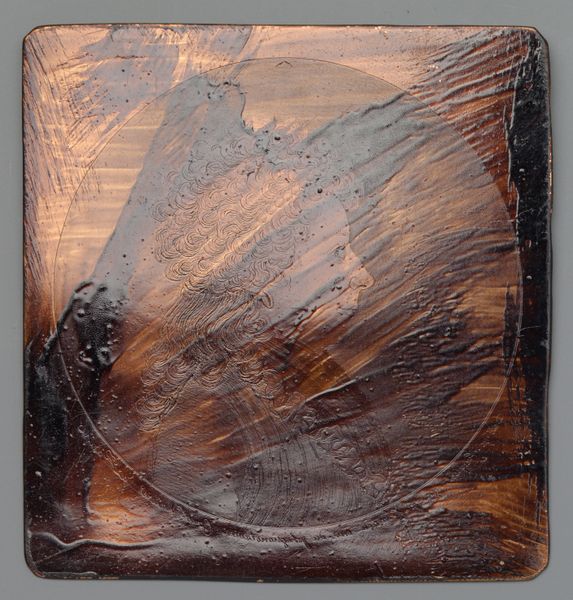
wood
#
tree
#
natural stone pattern
#
asian-art
#
landscape
#
bird
#
japan
#
24_meiji-period-1868-1912
#
wood
Dimensions: L. 10 11/16 in. (27.1 cm); W. 10 5/8 in. (27 cm); H. 1 3/4 in. (4.4 cm)
Copyright: Public Domain
Curator: Here we have Shibata Zeshin's "Square Tray," dating from the Meiji period, sometime between 1868 and 1912. It's crafted from wood and currently resides here at the Metropolitan Museum of Art. Editor: The first thing that strikes me is its utter simplicity. The wood grain creates this wonderful natural, almost topographic backdrop, like hills rolling into the distance. It is incredibly calming. Curator: That's a fascinating take. During the Meiji era, there was immense pressure to modernize and Westernize. Artists like Zeshin, however, consciously maintained and innovated traditional Japanese arts and crafts. This tray demonstrates his brilliant technique and adherence to traditional artistry. Editor: Yes, look closer, and the seemingly sparse composition reveals its artifice. The single willow tree, the delicate bird perched on what seems to be a silver branch—it's a poem in miniature, conjuring up feelings of serene contemplation. Don't you find the overall impression minimalist but profound? Curator: I see your point. While the tray appears minimalist to our modern eyes, it actually reflects a specific aesthetic tradition called "wabi-sabi," which embraces simplicity, imperfection, and transience. In this light, the apparent simplicity conveys far greater complexity and meaning within the social context of the period, defying popularist aesthetic drives. Editor: It also strikes me that Zeshin made something utterly practical--a tray--into something evocative. How amazing to serve tea or display objects on something that encourages mindfulness. I bet it would be an incredible conversation piece to be used and admired for generations. It’s an object holding histories of families in a most quiet fashion. Curator: Precisely, these objects facilitated social interactions, shaping values of social interaction through the careful presentation of everyday life through meticulously crafted objects. The tray encapsulates social values of hospitality, harmony, and the importance of aesthetics. Editor: To think something so small can contain so much. It gives a voice to quiet life. Curator: Absolutely, and reminds us of the complex interplay between art, craft, society, and politics in any historical period.
Comments
No comments
Be the first to comment and join the conversation on the ultimate creative platform.
